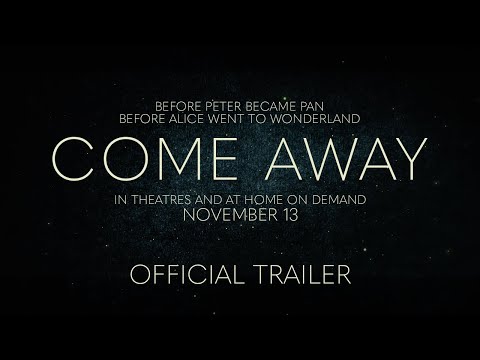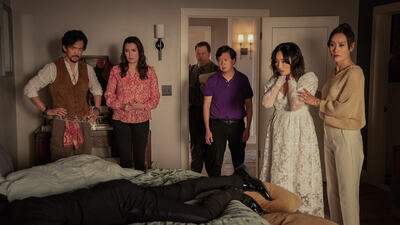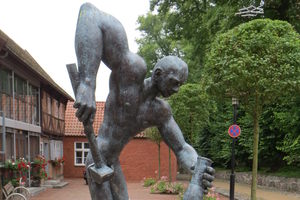Exploring the Legacy of the ‘Psycho’ Franchise
Welcome to Carnage Classified, a monthly column where we break down the historical and social influence of all things horror then rank the films of each month’s category. Franchises, movements, filmmakers, subgenres, etc…It’s all here! This entry is about the Psycho franchise.
C’mon. We all know this is the place to start this column off right, with the menacing mother of modern horror. What is there to say about Alfred Hitchcock’s Psycho that hasn’t already been said? For starters, the fact that, while unbeknownst and underappreciated en masse, this film birthed three sequels.
I know, I know, Psycho is a classic! How dare it be undermined by three subsequent films and a dreadful shot-by-shot remake starring … Vince Vaughn? Here’s the thing, the Psycho sequels aren’t just passable, they’re pretty enjoyable. Save for Gus Van Sant’s remake, the follow-up films premiered between 1983 and 1990, appropriately coming out during the height of the slasher genre that Hitchcock’s cherished first chapter helped in shaping.
The Psycho franchise and its classic cast of characters are widely representative, both historically tied to their time and universally understood within each of us. When the original debuted in 1960, mainstream horror consisted mostly of immortal figures like Dracula and scientific freaks of nature in films like Godzilla, King of the Monsters! and Creature from the Black Lagoon. Psycho, on the other hand, emerged with a grounded villain.
Norman Bates is a down-to-earth guy, living just off the highway with a boyish demeanor and a timid smile — he’s an immediate, human terror. Psycho brought forth a purveyor of barbarity that any of us could unknowingly encounter, being fooled by the compassionate humanity that we’ve been taught will keep us safe. Even the film’s native location is sinister in its familiarity. Hotels and motels are integral to everyday travel, yet the fear is in the innominate underbelly of an everyday enterprise.
The character of Norman Bates is aptly applicable to Jungian theories of personality. His persona, his surface-self, is meek and callow, but his shadow-self, defined by his repressions (like the Freudian theory of the id), is plagued by childhood trauma and buried sexuality that has left his mind vulnerable, permitting of Mother. He’s an unwilling participant in his own transgressions, a victim to a stronger, subconscious entity within his own person. Similarly, Marion is quite the everywoman, driven only to a singular crime by the emotional clutches of unfulfilled love.
These characters can be anyone, and yet, we have no way of knowing exactly who until we’re in the confines of carnage. In Hitchcock’s own words, when asked if his film would motivate a social delve into depravity, he said, “It is [only] the sick mind that is affected by [films like Psycho].” And yet, the film relies on the mystery of who possesses such a psyche and teases that, post-watch, this trepidation will exist in the air of every new encounter.
Psycho’s implication that each of us has an unconscious, uncontrollable facet within our minds flung the horror genre out of fables, myths, and beasts. It delicately dropped humanity into our own hands, asking us what our minds contain and what we’re capable of, and begging us to wonder if our hearts are strong enough to stop us.
Onto the ranks! Spoilers ahead.
5. Psycho (1998)

Imagine Entertainment
Alright, listen: is this a shot-for-shot remake? Yes. However, despite being nearly an exact replica, the actors in this film made some notably different choices with their interpretations, bringing new characteristics to old characters, and Gus Van Sant’s scant splicing of outside imagery provided a new form to analyze and interpret the film’s themes. So here we go.
Being that this is a direct remake, the vast majority of the thematic content is by default. Therefore, it can be no credit to this film itself. So instead, we can focus on the mostly aesthetic changes that were implemented to push the original film almost forty years into the future. The overarching issue with Psycho ’98 is that there isn’t a shred of restraint. There’s explicit nudity in the film’s opening scene and in the fateful shower sequence, as well as Norman’s obvious masturbation as he spies through the wall.
The characterizations are different, as well: Anne Heche’s Marion is more playful and volatile but lives within a constant air of annoyance; she’s not very likable, so there’s no emotional tie to her or her plight. Vince Vaughn’s Norman throws all subtlety out the window: from his skittery disposition and shrill, unnatural giggle to his pale-faced, red-eyed with a five o’clock shadow appearance, it’s immediately obvious that something is off. We don’t trust him for a moment. The innocent charm and boyishness that makes Norman’s character grounded and the subversion of expectation that lives as the source of the film’s true terror are therefore abandoned. There’s no ambiguity in the tension, so the eventual outcome has less impact.
Van Sant wasn’t faithful to Hitchcock’s original motifs, instead opting for his own stylized, but loosely implemented pink versus green color scheme. Storm clouds cut into the shower scene. A blindfolded woman and a lonely calf intersect the death of Arbogast. Yet these bouts of imagery, in their haphazard inclusion, add more self-serving drama than intellectual symbolism. If anything, the contents of Norman’s bedroom — G.I. Joes, a pink plushie, and pornography — add a thoughtful glance into his psyche.
However, this film falls to the lowest rank in the Psycho franchise because it doesn’t commit. As a shot-for-shot remake, there is an expectation of either faithful integrity to the original (think Michael Haneke’s Funny Games) or a bombastic balls-to-the-wall reimagining within old constraints (like Baz Luhrmann’s Romeo & Juliet). We get neither. Instead, there’s a fashionable pastel aesthetic that feels more for the intention of ego than homage.
4. Psycho III (1986)
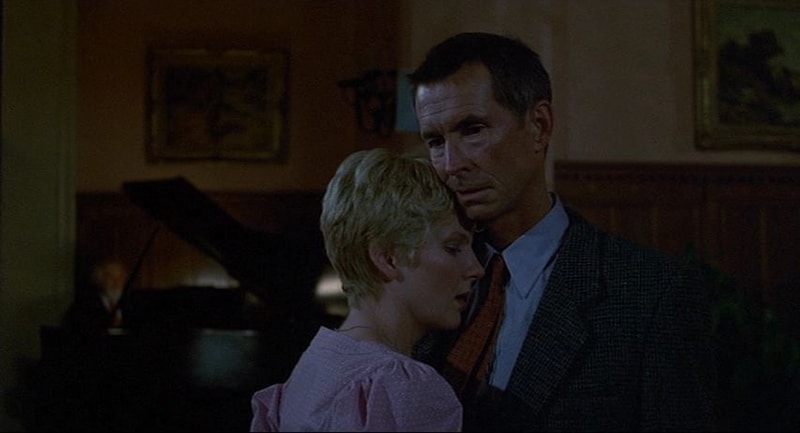
Universal Pictures
“There is no God!” The first line of the film is bellowed by Maureen (Diana Scarwid), a former nun, as she prepares to jump to her death. This opening dialogue explicitly plants Psycho III into the religious undertones established at the Psycho franchise’s impetus — for a moment. The second sequel, which marked Anthony Perkins’ directorial debut, flagrantly lacks focus while also making a heavy-handed attempt to execute as many allusions to the original as possible. After the events of Psycho II, Norman’s sanity is as fractured as ever, so when Maureen Coyle arrives, with those familiar initials and a reminiscent blonde pixie cut, Norman’s blood runs cold.
Norman’s mind is held hostage, tightly laced in his lunacy as he talks to Mother full-time and believes that Maureen is Marion reincarnated. Maureen’s hesitancy to commit to a life of abstinence, and feeling this betrays God, is her reason for attempting suicide. As she wavers in and out of consciousness during her second attempt, “Mother” stands above her brandishing a knife, but she sees the image of Mary with a crucifix delicately laid in her palm. These aspects of Maureen’s character study could’ve used greater elaboration on what defines self-worth, the confirmation bias that plagues depression, and the intersection of the rules of religion with the pursuits of one’s heart that may not align.
Thematically, and romantically, this sexual repression is what ties the film’s lead characters together; yet, sexual violence is still pervasive in the narrative that surrounds them. In our first view of an intimate Norman, when he and Maureen are lying together in bed, he leaves once she falls asleep, keeping the door open knowing that there’s a horde of rowdy, inebriated men occupying the bulk of the motel — a tenuous deed of sexual violence that Norman perhaps felt could serve as an act atonement, punishment, or both.
This relationship is the most compelling and nuanced yet short-lived aspect of Psycho III; the rest of the film juggles too many other themes, subplots, and supporting characters to provide sufficient support to any of them. The character of Tracy Venable (Roberta Maxwell), a reporter who incessantly pesters Norman for testimony, could’ve offered intriguing subtext about the sensationalism that circumvents true crime and editorializes the fame of violent offenders, often those with female victims. But like the other themes and symbols in the film, it’s coyly introduced and never fulfilled. Each character offers surface value, but is insipidly supplemented, making the overall story of Psycho III muddled with confusion.
3. Psycho IV: The Beginning (1990)
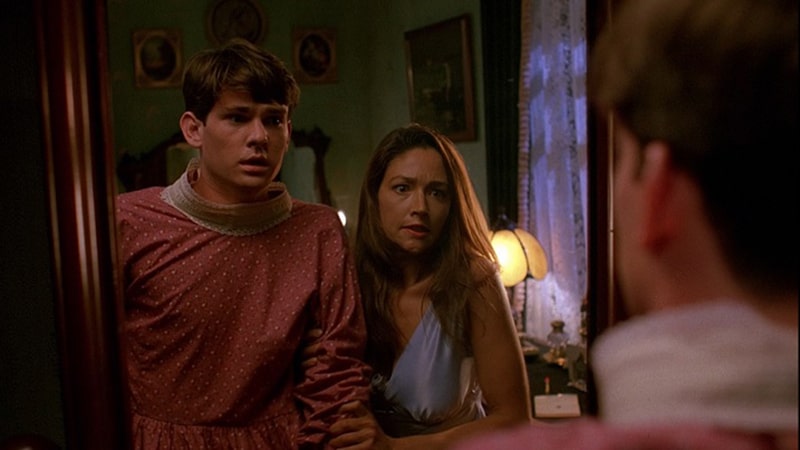
Universal Pictures
Olivia Hussey, legendary feminist horror icon from Black Christmas, bringing us mommy vibes? Promising! Psycho IV: The Beginning, written by original screenwriter Joseph Stefano, is our first introduction to a tangible Mother, as in the first time we see this figure living and breathing outside of Norman’s mind. The tale is told in two converging timelines — past and present — as Norman calls into a radio show to give his input on the night’s topic of boys who kill their mothers.
Psycho IV: The Beginning is the audience’s glance into the making of Norman Bates. It’s a peek into the traumas and tribulations of living under the direct dominion of Norma, and how it formed the evolution of Norman’s psychosis. Overall, it’s a film about the lasting scars of abuse. Norman’s relationship with his mother is fraught with inappropriate potential, never explicitly incestuous but defined by a paper-thin line of boundary that’s always teetering on being surpassed.
There is perennial gaslighting as well as lurid verbal abuse — Norma tickles Norman only to slap him for laughing, and later makes him dress in her clothing and denounce his sex because he gets an erection — all of which sets the stage for the matters that would afflict his psyche and compose his modus operandi for decades to follow. Yet through his recollections, Norman presently commits to upholding Norma’s defense, a harrowingly misguided coping strategy of the abused making excuses for the abuser.
As Norman dictates his past to the radio station, suggesting that he intends to kill again, rather than implementing any decisive action, the priority is to keep him on the line and keep viewers listening — to feed into the exploitation of tragedy for public interest and monetary gain from ratings. Despite a script that’s more corny than campy, Psycho IV: The Beginning exists at the intersection of the origins of love, lust, violence, identity, and exploitation, making the ambiguity behind Norman’s impulsive sprees of cathartic carnage plain as day.
2. Psycho II (1983)

Universal Pictures
Written by Tom Holland (who would go on to write and direct 1988’s Child’s Play), this film is a direct sequel to Psycho, taking place twenty-two years after the events that concluded Hitchcock’s classic. Norman is fresh out of the institution, returning to his old stabbin’ grounds and delivering the character we love with some quintessential ’80s slasher fun. Genuinely looking to assimilate back into society and start fresh, he returns home, gets a job at a diner, and meets Mary, who unbeknownst to him, is the daughter of Lila Loomis (yes, that Lila, and yes, that Loomis).
Lila was passionately against Norman’s release and plans to get him recommitted. She’s willing to do absolutely anything to drive his mind back into the tyrannical grip of insanity. Where the original creates sympathy for Norman in his dubious derangement, this film garners care for our antihero through his struggle to do the right thing despite falling victim to his own oppressive psyche.
This time around, addressed even more so than the Psycho franchise’s original themes of sexuality and righteousness, is the topic of mental health. Psycho II investigates the complexities of revenge, redemption, and rehabilitation while measuring the weight and fragility of mental stability and the means by which it can be dismantled.
The film’s implicit subtext acknowledges the issue of incompetent, uncaring social systems regarding mental health rehabilitation. When Dr. Raymond (Bill Loggia) drops Norman off at his home, he sighs that if it weren’t for the “cutbacks,” Norman could have a trained social worker to regularly check in with him. Later, as Mary pleads with Norman to focus on his positive memories, he states, “They’re not there anymore. The doctors took them away, along with everything else.”
Mental health treatment has long been insubstantial, but the period of time in which Norman was institutionalized, namely the 1960s, has a sweeping history of mistreatment, overcrowding, and underfunding that left patients neglected and released no healthier, and with no more resources than when they entered.
Norman’s wits are on the precipice, and he is constantly manipulated by his circumstances and compatriots. Through this context, as well as the blatant fact that Norman is being gaslighted by those around him — making the divide between reality and unreality enigmatic — the narrative implores you to wonder, with rightful suspicion, who is being exploited.
Psycho II doesn’t vindicate Norman for any of his slayings. It only complicates the motive behind them, formulating the thought of where he, Mary, Lila, and the state reside on the tier of accountability and inserting this query into the contexts and societies that we live in offscreen.
1. Psycho (1960)
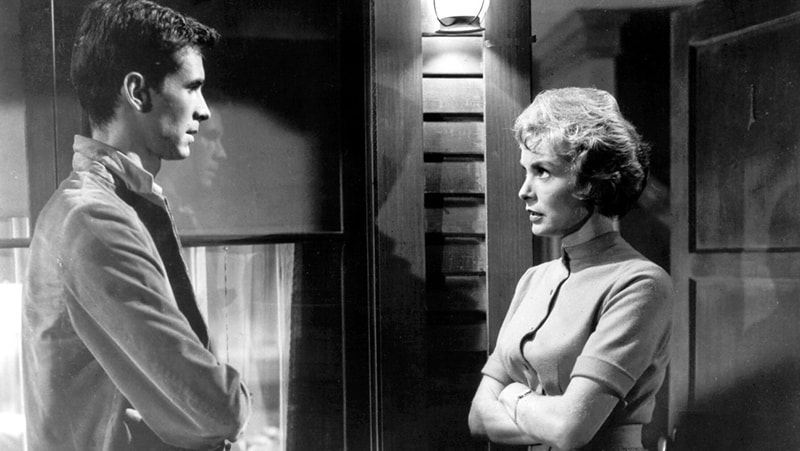
Universal Pictures
I know… you’re all super shocked this made the number-one spot. The film that kicked off the Psycho franchise has a subtlety and charm that bleeds through every frame and every glance exchanged. Anthony Perkins is at his best here, and Janet Leigh, despite her mild forty-five-minute stint, emanates palpable energy and empathy. But without undermining the stunning performances that are integral to the film’s success, its ultimate glow is the strength of the thematic content that runs below the narrative surface — bringing a new kind of brutality and, especially, viewer culpability to the silver screen.
The use of shadows and reflections in the film is an extraordinary way to not only show the duality of Norman, but also the duality of Marion, and how we can view these characters not only in opposition but in harmony. We first see Marion’s distinct shadow as she exits the office to “go home,” when she decides in her mind to steal the money. Norman’s first notable shadow is when he shows her into her cabin after he’s made the decision to place her on the other side of his peephole.
Both characters are morally ambiguous, even if it’s for different reasons that carry different weights, and yet, we care for both of them. Norman, we pity. A grown man living off a deserted highway with no wife or life, only a domineering mother. With Marion, we empathize. She’s yearning for love and emotional security, and although she’s committed a crime, we don’t feel disdain towards her. She’s an antihero — we want her to succeed despite being aware of her iniquity, so when she’s murdered, it matters. It’s traumatic. Is it because we can see ourselves and those we love in Marion? Or is it because we feel we’ve played a part in her demise? I’d say both.
Hitchcock made the decision to film in black and white not only to be easy on the wallet but also to protect the viewer, to shield them from the realism of any bloodied brutality on screen. This move surely made the film more palatable to audiences, but it also serves to ease the mind — and likely the guilt.
Psycho tackles a lot thematically, but what is most prevalent is the underlying misogyny: Marion Crane is not punished for her criminal theft of $40,000; she is punished for her beauty. In the eyes of Mother, Marion is at fault for Norman’s own sexual desire, feelings of emasculation, and inability to control himself. Through frequent POV shots — spying along with Norman through the wall and seeing the savagery in the shower from a first-person perspective — and the final break of the fourth wall that closes the film, Hitchcock enmeshes the audience with Norman, with Mother, and with the atrocity that’s occurred. He makes the viewer undeniably aware that they’ve been a willing participant in the vicarious vigilantism of a fractured mind.
From endless homages to Bernard Hermann’s iconic score, name-dropping tributes like Billy Loomis in Scream, cinematic allusions to the shower scene, and the participation in the horrifying anonymity of hotels in American Horror Story: Hotel, the cultural influence of Psycho is ever-present and routinely felt. However, what truly makes Psycho influential is its audaciousness in rooting itself in quotidian life, a decision that established a grounded sense of terror to those who viewed the film.
Psycho‘s realism is in the suggestion that the horror is a reality, a deeply seeded darkness within the human mind and heart. It remains a classic today, sixty years later, because while the terror of government-made mutated beasts no longer feels plausible, the threat presented in the Psycho franchise is acutely human, making it adaptable to every coming year — forever timeless.
